Table of Contents
Spring is the season of new beginnings, and for many cultures around the world, it is a time to celebrate growth, rejuvenation, and renewal. In Iran, the transition from winter to spring is marked by a unique and vibrant celebration known as Haft Sin, which translates to “seven items beginning with the letter ‘S'”.
Haft Sin (or Haft Seen) is not just a celebration of spring, but an ancient tradition that has been passed down through the generations as a way of preserving Persian heritage and culture. This colorful and festive ritual is one of the most important events in the Iranian calendar and is celebrated every year on the Persian New Year, also known as Nowruz.
In this comprehensive guide, we will take you on a journey through the rich history and symbolism behind Haft Sin, exploring everything from the seven items that make up the Haft Sin to the rituals and customs that go along with this joyous celebration.
So if you’re ready to learn about this tradition and gain a deeper understanding of the fascinating Persian custom, then let’s dive in!
Seven Symbols of Haft Sin
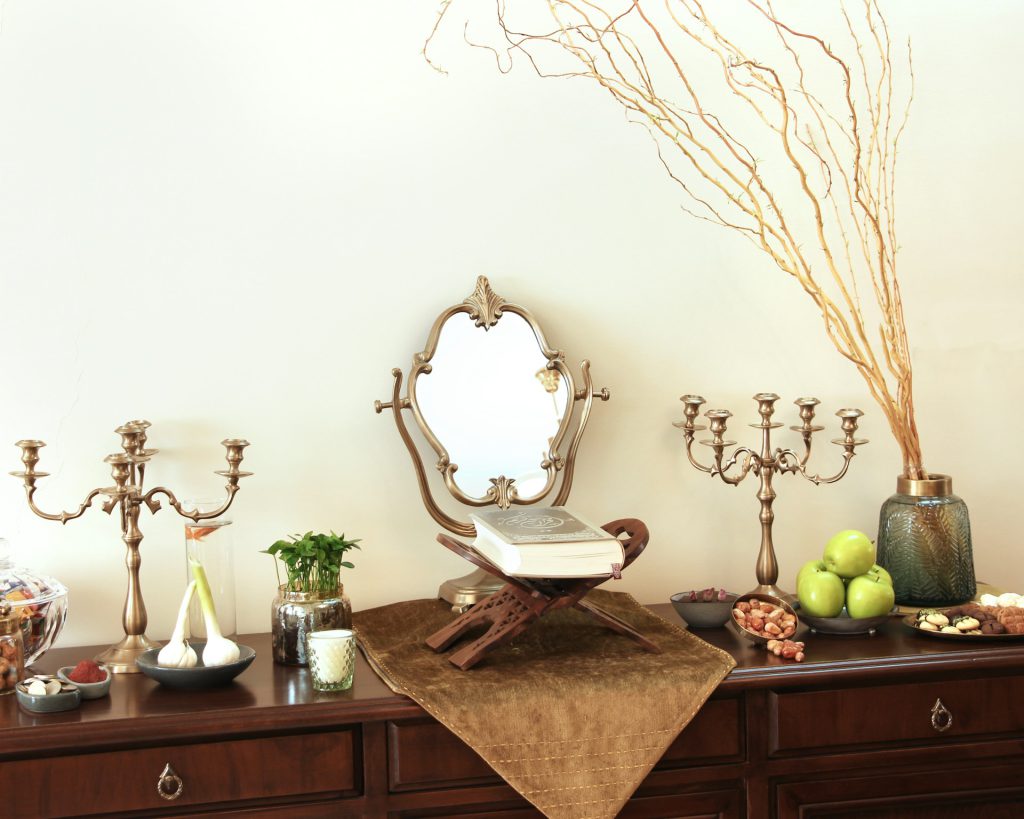
Haft Sin table is comprised of seven symbolic items, each of which represents something significant in Persian culture. These items all start with the Farsi letter “Sin,” which gives the celebration its name. Let’s take a closer look at each of the elements and explore their deep-rooted symbolism.
Sabzeh (Sprouts)
Sabzeh is the first of Haft Sin items and represents rebirth and growth. It is usually a dish of sprouted seeds, often wheat, barley, lentils, or chickpeas. The sprouts are grown in a dish a few days before the New Year, and their verdant green symbolizes the coming of spring when flowers and plants renew their growth.
Samanu (Wheat Pudding)
Samanu is a sweet paste made from germinated wheat, which usually takes several days to prepare. It symbolizes wealth and happiness and reminds Iranians of the importance of hard work and patience. A mixture of wheat, water, and sugar is boiled and slowly stirred until it becomes a thick, dark brown paste.
Senjed (Dried Fruit of Lotus)
Senjed, commonly known as the dried fruit of the lotus tree, represents love and affection. The flavor of this fruit is symbolically sweet, and its brown color is intended to remind us of the simplicity of life. It is eaten as a snack, typically mixed with almonds or walnuts and adds a tangy flavor to the traditional tabletop arrangement.
Sir (Garlic)
Sir, or garlic, represents medicine and health. Iranians believe that eating garlic keeps illnesses and disease at bay, especially during the seasonal changes of springtime. Garlic is also said to represent cleansing and helping individuals rid themselves of negative energies.
Somaq (Somac Fruit)
The red color of the sumac berries represents the sunrise and the new life that it brings. It is believed that its use in the Haft Seen will bring blessings and wealth to the household. The berry also symbolizes patience.
Serkeh (Vinegar)
Serkeh, or vinegar, symbolizes age and patience. It is supposed to promote long life and good health. Iranians keep Serkeh vinegar in their homes because it has been linked to preventing colds and flu.
Seer (Garlic)
Seer, or garlic, represents exorcism and ridding oneself of negative powers. Garlic, in ancient times, was believed to have been able to ward off evil spirits and promote positivity.
Setting Up the Haft Sin
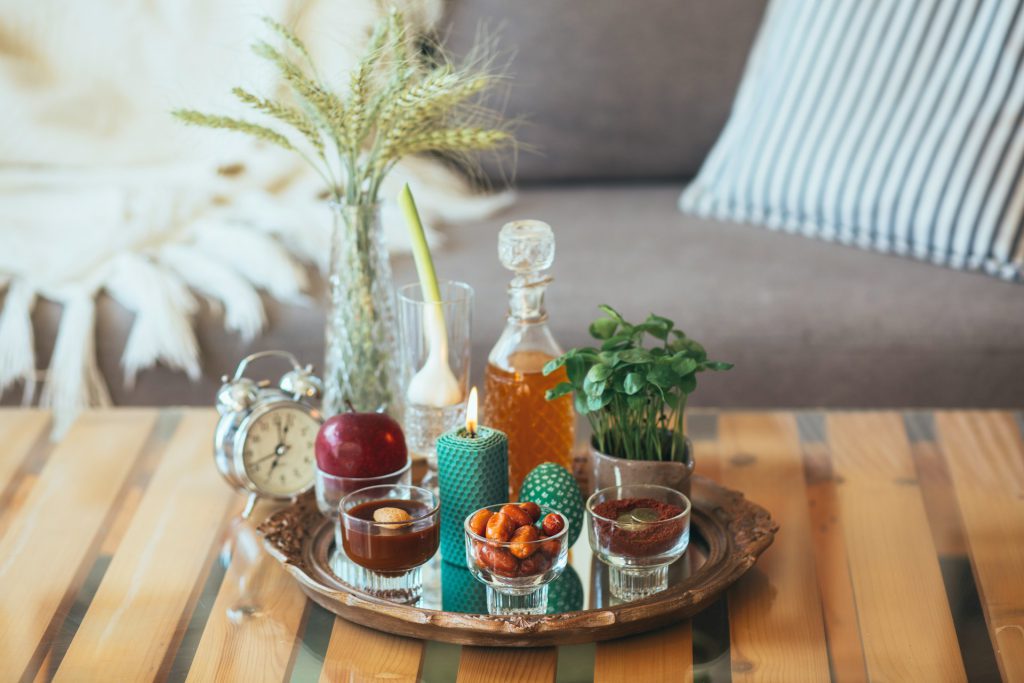
Firstly, the Haft Sin Nowruz is usually set up next to a mirror to reflect the beauty of the season and the surroundings. A special tablecloth is then typically laid out to represent the earth, and the seven items of the Haft Sin are arranged on top of the cloth.
When it comes to arranging the seven items of the Haft Sin, balance is crucial. Iranians believe that each item should be placed in a specific order, and care should be taken to ensure all items are equal in size and shape. Typically, the Sabzeh should be placed in the center of the Haft Sin, while the other items are arranged around it in either a zigzag or a straight line.
In addition to Haft Sin items, other symbolic items can also be added to the tabletop arrangement. An illustration of Hafez, a Persian poet, or a holy book, such as the Quran or the Bible, can be placed in the middle of the Haft Sin, to promote spirituality and blessings on the new year.
Decorating the area around the Haft Sin is just as important as arranging the items themselves. Spring flowers and plants, like hyacinths, tulips, and daffodils, should be placed around the Haft Sin to represent the season’s growth and renewal. Colorful eggs, like the ones found in Easter egg hunts, are another popular decoration and a symbol of fertility and new beginnings.
Celebrating Haft Sin
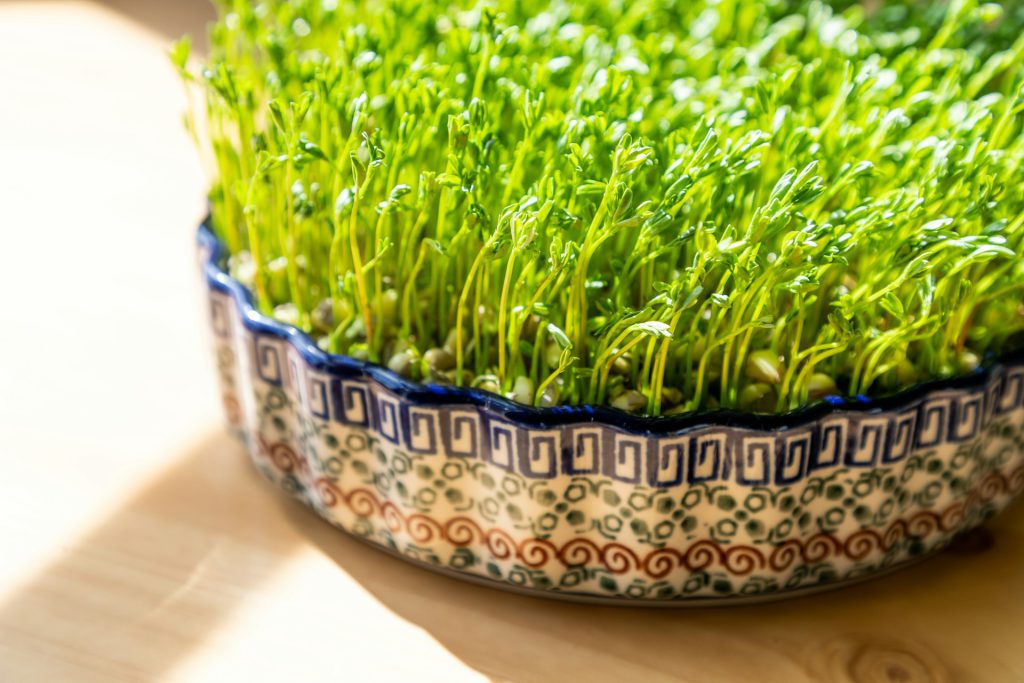
Haft Sin Nowruz have been passed down through generations and are now an integral part of Persian culture. Iranians celebrate the first day of spring, March 20th, which is also the Persian New Year or Nowruz. This celebration lasts for 13 days following the start of spring, and it is a time marked by joyous festivities and special rituals.
Haft Sin celebrations commonly begin with a thorough spring cleaning of homes and are followed by family visits and gift-giving. Iranians usually visit their elderly or senior family members and give them gifts such as sweets or fruits. Family members also exchange decorated fish-shaped candles symbolizing the zodiac sign Pisces which Iranians call Mahi, which is played upon words suggesting good luck, happiness and good fortune.
Additionally, family and friends gather around the Haft Sin tabletop arrangement for a feast of traditional foods. The most popular foods served during this time are fish, known as Sabzi polo ba Mahi, an herbed rice dish, along with Ash-e Reshteh, a traditional Persian soup made from beans, noodles, and herbs.
During the Haft Sin celebration, Iranians also jump over bonfires, an ancient ritual symbolizing purification and the removal of negative energy. Iranians believe the fire can rid their homes of any negative specters or malevolent spirits lingering around.
Another critical part of Haft Sin is receiving the blessings of those around you. Iranians typically receive new year blessings by visiting each other’s homes and taking part in a tradition called “the Seven S’s.” Each of the seven items in the Haft Sin arrangement represents one of the Seven “S” qualities that That God has to offer. Guests take and eat one item from the tabletop and, as they do so, express a wish or a prayer for the upcoming year.
Celebrating Haft Sin during the Persian New Year is a time of joy, hope, and renewal. It’s an opportunity for Iranians around the world to come together, honor their traditions, and pay tribute to the beauty of spring.
Haft Sin Around the World
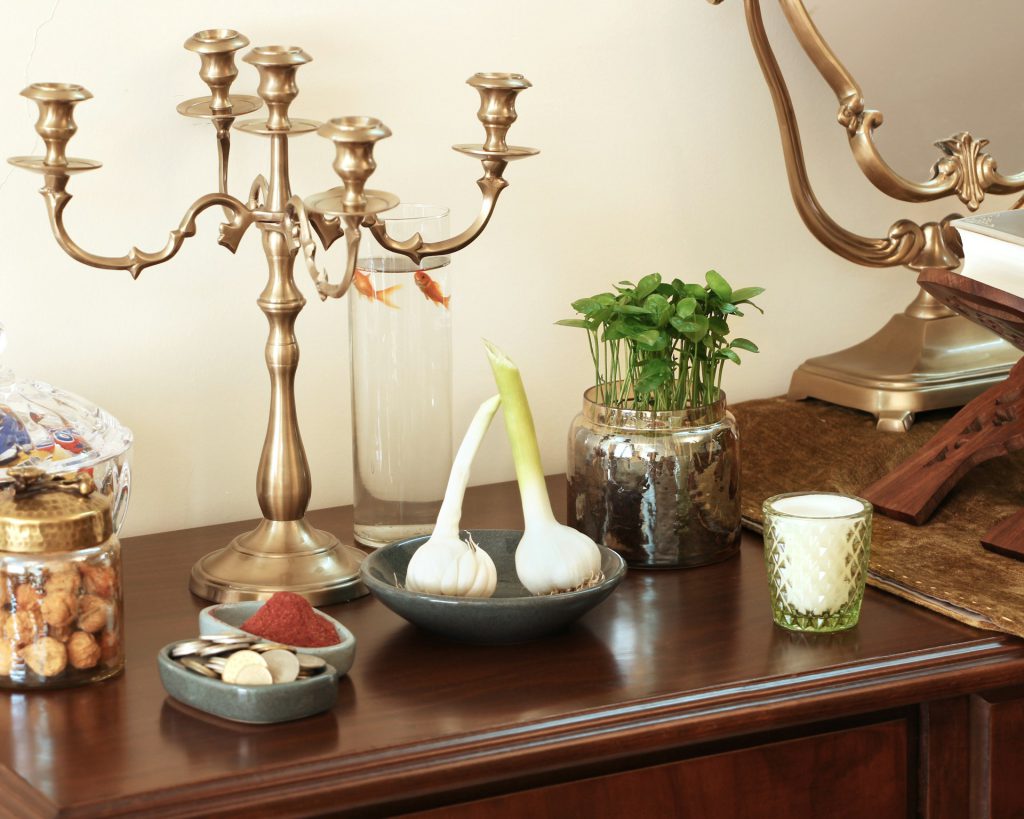
Haft Sin set is not only celebrated in Iran, but also in many other parts of the world where Iranian communities thrive. Over the years, the traditions of Haft Sin have evolved, and its meaning has shifted depending on the culture and heritage of the community.
In Afghanistan, the table is celebrated with the same 7 traditional elements as in Iran. However, Afghans typically add Tekka, a sweet pastry filled with poppy seeds and nuts, and in some cultures, even include traditional Afghani clothes, jewelry or some cash to the Haft Sin set. It is said that these represent the seven attributes of patina, or offerings to God.
In Azerbaijan, Haft Sin is celebrated as Novruz Bayrami, alongside the traditional Haft Sin elements, other ingredients such as nuts or fruits also find their places on the table arrangement. Azeries also prepare a large feast, including dishes such as Dolma (stuffed bell peppers), a traditional meat pie called Pastirma, and more. Unlike Most of the Iranian households, Azeries build fire bonfires in the yards to leap over and celebrate Spring’s arrival.
In countries such as the United States, Canada, and Australia, Iranians abroad keep the Haft Sin either in their homes or in community centers, where they celebrate with families and friends. Some Iranians abroad also hold public Haft Sin events in parks or other public places. These events include singing, dancing and traditional food and drinks.
FAQs about Haft Sin
Q1: What are the 7 S of Persian New Year?
A1: Sabzeh is growing wheatgrass or lentil sprouts. Samanu is a sweet pudding with wheat germ. Senjed is dried oleaster or lotus tree fruit. Seer means garlic. Seeb is for apples. Sumac is a crushed spice. Serkeh is vinegar.
Q2: What does the Nowruz symbolize?
A2: Over 3,000 years ago, Nowruz began with the ancient Persian religion of Zoroastrianism. It marks the renewal of nature and the victory of light over darkness through meaningful rituals.
Q3: What is on a Nowruz table (Haft Sin table)?
A3: Haft seen tables may also have a Quran, a book of poetry, a mirror, and candles (symbolizing looking into the future). A goldfish in a bowl represents life, while painted eggs signify fertility. Additionally, various sweets and fruits are often included in the arrangement.
Q4: What is the flower of Nowruz?
A4: The hyacinth symbolizes spring and is a favorite decorative plant among those worldwide who celebrate Nowruz.
Q5: What fish is the symbol of Nowruz?
A5: Iranians have been marking Norouz and the start of spring by putting live goldfish on their holiday tables as a symbol of everlasting life.
Last Words: Experience the Best of Haft Sin in Iran with a Customized Tour
Spring in Iran is celebrated with Haft Sin, a tradition during the Persian New Year (Nowruz). People set up a display with seven items, all starting with ‘S’, to honor their heritage. This tradition has been passed down through generations and is a way to welcome new beginnings. The guide will explain the history and meaning of Haft Sin, including the items and customs. If you’re interested in this Persian custom, let’s explore it together!
Embarking on a journey to Iran to immerse yourself in the richness of Haft Sin requires more than just a standard itinerary. To truly savor the beauty and tradition of this cultural gem, consider indulging in the charm of Customized tours. That’s where To Iran Tour comes into play.
At To Iran Tour, we’re not just tour organizers; we’re enthusiasts, passionate about helping you have a great experience in Iran. Let us be your companions in discovering the beauty of Haft Sin and beyond.

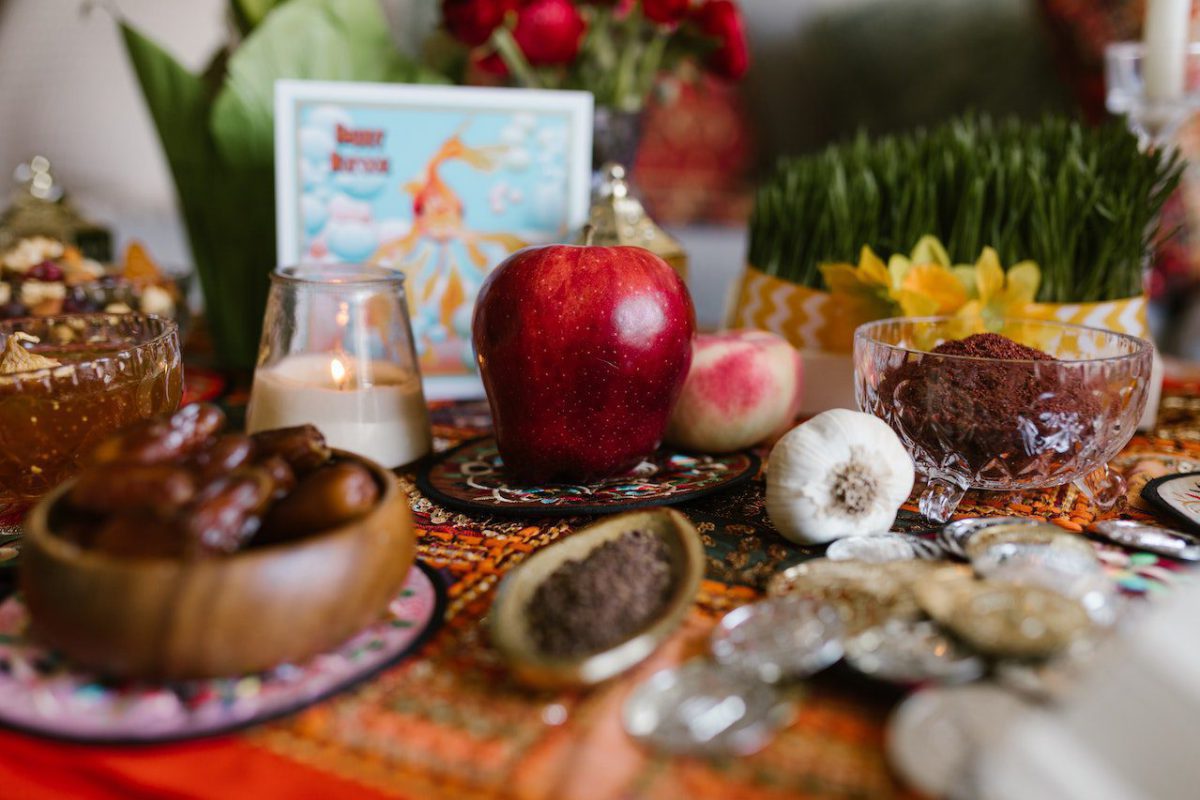
[…] the new year, most Iranians set the Haft Sin table, and as the name suggests, they put seven different things on this table that start with the […]